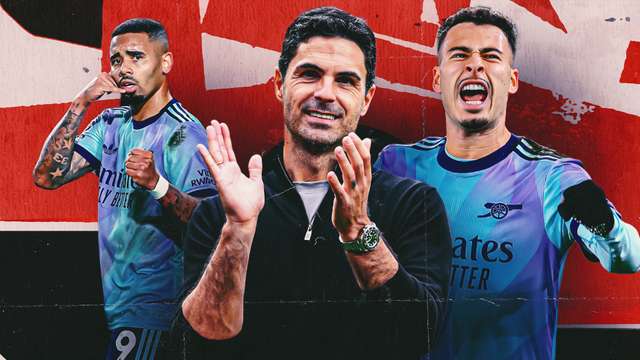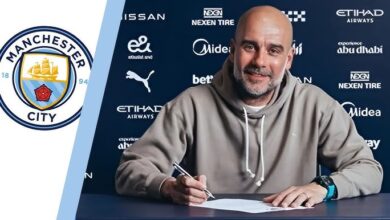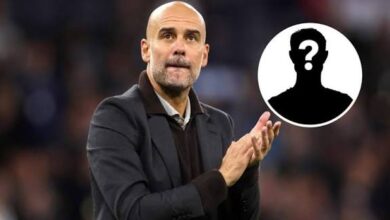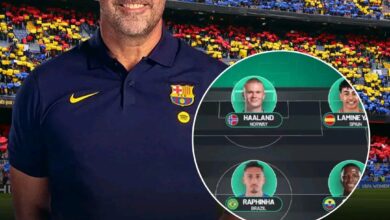Benjamin Sesko to Arsenal: Complete Transfer Analysis and Timeline
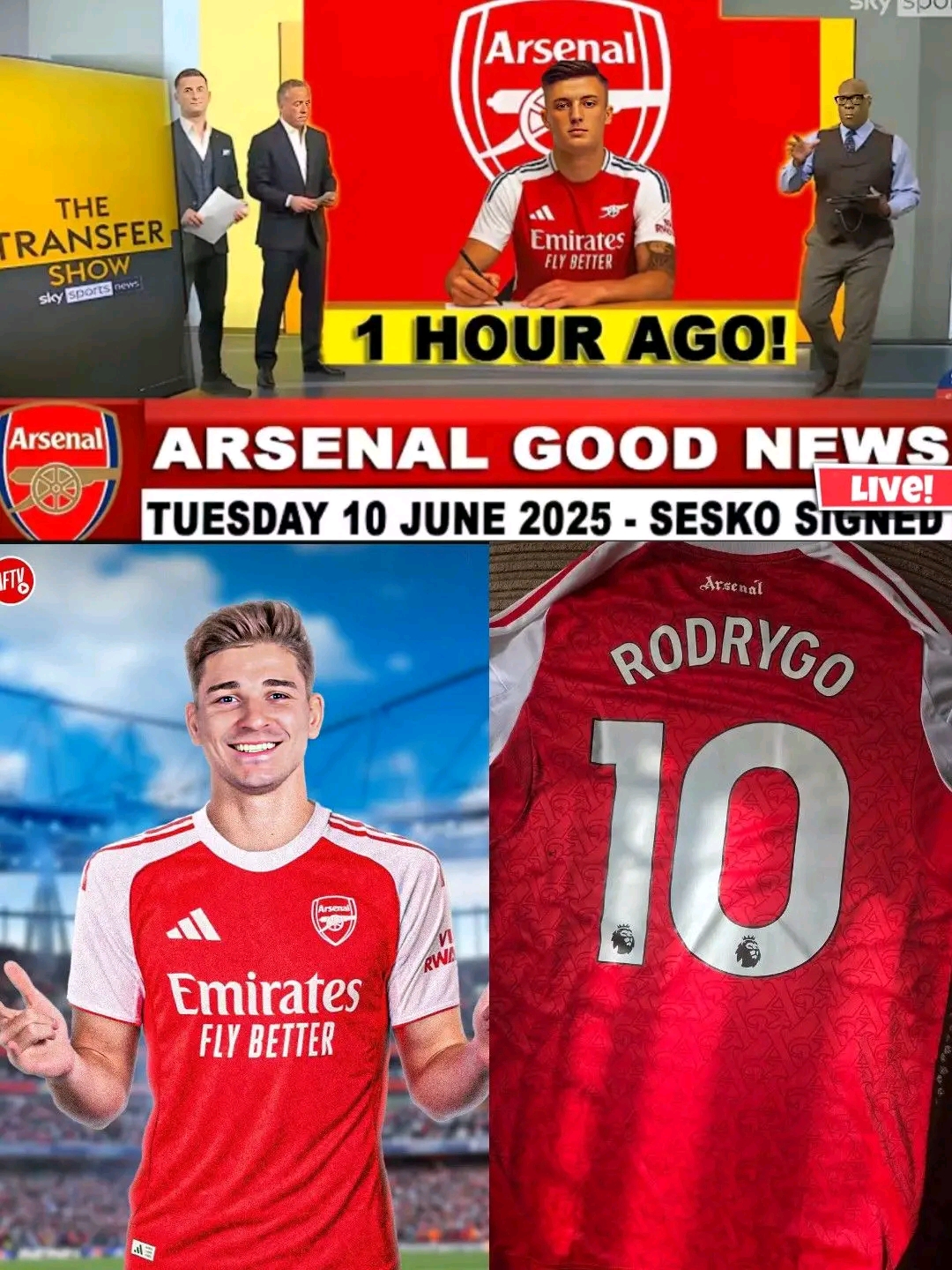
Arsenal Football Club finds itself at a critical juncture in their squad development, with the urgent need for a clinical striker becoming increasingly apparent following a challenging 2024-25 campaign. The Gunners’ pursuit of RB Leipzig’s Benjamin Sesko represents more than just another transfer saga; it embodies Arsenal’s ambition to bridge the gap between their current status and their aspirations for domestic and European glory.
The North London club’s striker situation has been a source of concern for manager Mikel Arteta and the Arsenal hierarchy for some time. The reliance on Gabriel Jesus and Kai Havertz as the primary attacking options exposed significant vulnerabilities when both players faced injury setbacks during crucial periods of the season. This lack of depth and proven goalscoring ability in the final third became a recurring theme that potentially cost Arsenal valuable points in their pursuit of major honors.
As the summer transfer window approaches, Arsenal’s recruitment team, led by Edu Gaspar and backed by the Kroenke ownership, has identified the striker position as the absolute priority. The club’s approach to this transfer window demonstrates a clear understanding that without a reliable goalscorer, their ambitions of competing with Manchester City, Liverpool, and other elite clubs will remain unfulfilled.
Benjamin Sesko has emerged as one of Europe’s most promising young strikers, combining physical presence with technical ability and an impressive goalscoring record. Born on May 31, 2003, in Radece, Slovenia, Sesko’s journey to prominence has been nothing short of remarkable. Standing at 6’4″ (1.95m), the Slovenian international possesses the physical attributes that modern football demands from a center-forward, while his technical skills and football intelligence set him apart from many of his contemporaries.
Sesko’s career trajectory began in his homeland with NK Krsko before moving to Red Bull Salzburg’s academy system, where he developed under the renowned Red Bull methodology. The Austrian club has become synonymous with developing young talent and selling them to Europe’s elite clubs, with players like Erling Haaland, Sadio Mane, and Dayot Upamecano all having passed through their system.
The striker’s breakthrough came during his time with Red Bull Salzburg, where he showcased his ability to perform on the big stage, including impressive displays in the UEFA Champions League. His performances caught the attention of numerous European clubs, ultimately leading to his transfer to RB Leipzig in 2023, where he has continued his development under the guidance of experienced coaches and alongside established international players.
What makes Sesko particularly attractive to Arsenal is his versatility and adaptability. Unlike traditional target men, Sesko combines aerial dominance with excellent feet, capable of holding up play, creating opportunities for teammates, and finishing chances with both feet. His pace and movement in behind defenses add another dimension to his game, making him a nightmare for opposing center-backs to handle.
The 2024-25 season served as a stark reminder of Arsenal’s need for a proven goalscorer. While the team showed significant improvement in various aspects of their play under Mikel Arteta’s guidance, the lack of a consistent striker became a recurring issue that hampered their progress in multiple competitions.
Gabriel Jesus, signed from Manchester City with high expectations, has shown flashes of brilliance but has struggled with consistency and injury problems. The Brazilian’s work rate and pressing ability align perfectly with Arteta’s tactical system, but his finishing has often let him down in crucial moments. His injury sustained during the World Cup with Brazil significantly impacted his rhythm and confidence, creating a ripple effect throughout Arsenal’s attacking play.
Kai Havertz’s adaptation to the striker role has been a mixed bag. The German international, naturally more comfortable in deeper positions, has shown commendable effort in adjusting to the demands of leading the line. However, his lack of natural striker instincts has been evident in key moments, particularly in games where Arsenal needed a clinical edge to break down stubborn defenses.
The January transfer window presented an opportunity for Arsenal to address this issue, but the club’s failure to secure a striker during the winter break proved costly. With both Jesus and Havertz facing injury concerns during the crucial final months of the season, Arsenal found themselves without a recognized striker for several important fixtures. This situation forced Arteta to deploy makeshift solutions, including playing wingers in central positions or adjusting the tactical system entirely.
The impact of this striker shortage was felt across multiple competitions. In the Premier League, Arsenal dropped points in games where they dominated possession and created numerous chances but lacked the clinical finishing to convert dominance into victories. The Champions League campaign, while showing promise, highlighted the need for a proven goalscorer who could deliver in high-pressure European nights.
Arsenal’s interest in Benjamin Sesko is not merely opportunistic but represents a carefully calculated recruitment strategy that aligns with the club’s long-term vision. Several factors make Sesko an ideal target for the Gunners, starting with his age and potential for further development.
At just 22 years old, Sesko fits perfectly into Arsenal’s recruitment profile of targeting young players with high potential who can contribute immediately while growing with the club. This approach has proven successful with signings like Martin Odegaard, Bukayo Saka’s development, and Gabriel Martinelli’s progression. Sesko represents the next phase of this strategy, bringing proven experience at the highest level while still having room for improvement.
The striker’s playing style complements Arsenal’s tactical approach under Mikel Arteta. The Spanish coach has developed a system that requires the striker to be involved in buildup play, press from the front, and create space for the attacking midfielders and wingers to exploit. Sesko’s technical ability, combined with his physical presence, makes him ideally suited to these demands.
Furthermore, Sesko’s experience in the Red Bull system, known for its high-intensity pressing and quick transitions, aligns with Arsenal’s tactical evolution. Players who have thrived in this environment have often adapted well to similar systems in other clubs, suggesting that Sesko’s transition to Arsenal’s style of play could be seamless.
The financial aspect also plays a crucial role in Arsenal’s interest. While Sesko would command a significant transfer fee, his age and potential make him a valuable long-term investment. Unlike signing an established star in their late twenties, acquiring Sesko represents the opportunity to secure a striker who could lead Arsenal’s attack for the next decade.
The pursuit of Benjamin Sesko represents a complex negotiation process involving multiple parties, each with their own interests and objectives. Understanding the timeline and key milestones in these discussions provides insight into the challenges Arsenal face in securing their primary target.
Initial contact between Arsenal and RB Leipzig is believed to have occurred in early 2025, with informal discussions taking place during the January transfer window. However, Leipzig’s reluctance to sell during the winter window, combined with their participation in various competitions, meant that serious negotiations were postponed until the summer.
The first formal approach came in late April 2025, when Arsenal submitted an initial inquiry about Sesko’s availability and Leipzig’s valuation. This preliminary contact served to gauge the German club’s stance and establish the parameters for potential negotiations. Leipzig’s response was reportedly positive but indicated that they would require a substantial offer to consider selling their prized asset.
Throughout May 2025, discussions intensified as Arsenal’s recruitment team, led by Edu Gaspar, maintained regular contact with their Leipzig counterparts. These conversations covered various aspects of a potential deal, including the transfer fee structure, payment terms, and additional clauses that could benefit both clubs.
The player’s representatives have also been actively involved in the process, with Sesko’s agent engaging in discussions about personal terms, contract length, and the role he would play within Arsenal’s squad. Reports suggest that the striker is genuinely interested in the move to the Premier League and views Arsenal as an ideal destination for the next phase of his career.
However, the negotiation process has not been without its challenges. Leipzig’s valuation of Sesko, reportedly in excess of £60 million, represents a significant investment for Arsenal, requiring careful consideration of their overall transfer budget and Financial Fair Play compliance. The German club’s negotiating position has been strengthened by interest from other European clubs, creating a competitive environment for Sesko’s signature.
The summer transfer window structure has added an unexpected complication to Arsenal’s pursuit of Benjamin Sesko. The introduction of a brief closure period, designed to accommodate clubs participating in the expanded FIFA Club World Cup, has created a unique situation that could impact the timing of any potential announcement.
The transfer window’s temporary closure from June 10 at 7pm until June 16 means that any deals not completed before this deadline cannot be officially registered until the window reopens. This timing coincides with the Club World Cup, which features several top European clubs and requires them to have the opportunity to strengthen their squads before the tournament begins
For Arsenal and Sesko, this timing presents both challenges and opportunities. On one hand, the brief closure period means that if negotiations are not concluded by the deadline, the official announcement and registration of the transfer will be delayed by nearly a week. This delay could impact pre-season planning, medical examinations, and the player’s integration into the squad.
However, the closure period also provides additional time for negotiations to continue without the pressure of an immediate deadline. Clubs and players can use this time to finalize details, discuss contract terms, and ensure that all parties are completely satisfied with the arrangement before the official confirmation.
The situation is further complicated by the fact that other clubs interested in Sesko may also be racing against the same deadline, potentially creating a scenario where multiple offers are submitted in the final hours before the window closes. This competitive pressure could work in Arsenal’s favor if they have already established a strong relationship with Leipzig and the player, or it could lead to a bidding war that inflates the transfer fee.
Arsenal’s pursuit of Benjamin Sesko is not taking place in isolation, with several other clubs reportedly monitoring the striker’s situation. This competition adds urgency to Arsenal’s efforts while also providing context for their recruitment strategy and backup plans.
Newcastle United’s Alexander Isak has been consistently linked with a move to Arsenal, representing a proven Premier League striker who has demonstrated his ability to score goals at the highest level. The Swedish international’s pace, finishing ability, and tactical intelligence make him an attractive option, though Newcastle’s reluctance to sell and the player’s high valuation present significant obstacles.
Sporting CP’s Viktor Gyokeres represents another high-profile target, with the Swedish striker having enjoyed a remarkable season in Portugal. His goalscoring record and physical attributes align with Arsenal’s requirements, though competition from other European clubs and Sporting’s Champions League qualification could complicate any potential move.
Other names that have been mentioned in connection with Arsenal include Ivan Toney, who offers Premier League experience and a proven track record, and various international strikers who could provide the clinical edge that Arsenal have been missing. However, Sesko appears to have emerged as the primary target due to his combination of current ability and future potential.
The competition for Sesko’s signature reportedly includes clubs from the Premier League, Serie A, and other top European leagues. This interest validates Arsenal’s assessment of the player’s quality while also highlighting the challenges they face in securing his services. The club’s ability to offer Champions League football, combined with their project under Mikel Arteta and the appeal of the Premier League, provides them with significant advantages in the race for Sesko’s signature.
The potential acquisition of Benjamin Sesko represents a substantial financial commitment that must be viewed within the context of Arsenal’s overall transfer strategy and long-term financial planning. The club’s approach to this transfer reflects their evolution from a more conservative spending policy to a more aggressive investment strategy aimed at competing with Europe’s elite.
RB Leipzig’s valuation of Sesko, reportedly exceeding £60 million, would make him one of Arsenal’s most expensive signings in recent years. This investment reflects both the player’s quality and potential, as well as the premium associated with signing young talent from successful European clubs. The fee structure is likely to include various performance-related bonuses and sell-on clauses, providing Leipzig with additional financial incentives while protecting Arsenal’s interests.
From Arsenal’s perspective, the investment in Sesko must be justified by his immediate impact on the team’s performance and his long-term contribution to the club’s success. The striker’s age profile means that he could potentially serve as Arsenal’s primary center-forward for the next decade, making the high initial investment more palatable when amortized over his expected contract length.
The transfer would also have implications for Arsenal’s existing squad, particularly regarding the futures of Gabriel Jesus and other attacking players. The arrival of a high-profile striker could lead to departures as players seek more regular playing time, potentially generating additional transfer revenue to offset the investment in Sesko.
Arsenal’s compliance with Financial Fair Play regulations remains a crucial consideration in any major transfer. The club’s recent financial performance, combined with their Champions League qualification and commercial growth, provides them with the flexibility to make significant investments. However, careful planning is required to ensure that the Sesko deal fits within their overall financial framework.
Mikel Arteta’s tactical vision and his ability to integrate new signings into his system will be crucial to the success of any potential Sesko transfer. The Spanish coach has demonstrated his capability to improve players and adapt his tactical approach to maximize the strengths of his squad, suggesting that Sesko could thrive under his guidance.
Arteta’s preferred tactical system has evolved significantly since his appointment, moving from a more conservative approach to a more aggressive, possession-based style that emphasizes quick transitions and high pressing. Sesko’s physical attributes and technical skills make him ideally suited to this approach, providing the focal point that Arsenal’s attack has been missing.
The striker’s ability to hold up play and bring teammates into the game would complement the creative talents of players like Martin Odegaard, Bukayo Saka, and Gabriel Martinelli. His movement in the box and finishing ability could provide the clinical edge that has been lacking in Arsenal’s performances against well-organized defenses.
Arteta’s track record of developing young players also bodes well for Sesko’s potential success at Arsenal. The coach’s work with players like Bukayo Saka, Emile Smith Rowe, and even the improvement shown by Gabriel Jesus suggests that he could help Sesko reach new levels of performance.
The tactical flexibility that Sesko could provide would also allow Arteta to vary his approach depending on the opposition and game situation. The striker’s aerial ability makes him a threat from set pieces, while his pace and movement could be utilized in counter-attacking situations
The potential signing of Benjamin Sesko carries significant expectations from Arsenal’s fanbase, who have been calling for striker reinforcement for several seasons. The club’s supporters have demonstrated remarkable patience during the rebuild under Mikel Arteta, but the lack of a clinical finisher has been a source of frustration that needs to be addressed.
Arsenal fans have experienced the disappointment of missed opportunities in recent seasons, where the team has created numerous chances but failed to convert them into goals. The expectation is that Sesko could provide the clinical edge that transforms draws into wins and helps the club compete for major trophies.
The pressure on any new striker at Arsenal is inevitably high, given the club’s history and the expectations of success. Players like Thierry Henry, Ian Wright, and other legendary Arsenal strikers have set a high bar for goalscoring excellence, creating both inspiration and pressure for any new arrival.
However, Sesko’s age and development potential could work in his favor, as fans are generally more patient with young players who show promise. The success of other young signings under Arteta has created a positive environment for player development, suggesting that Sesko would receive the support needed to adapt to the Premier Leagu
The club’s communication strategy around the potential signing will be crucial in managing expectations and ensuring that fans understand the timeline for Sesko’s development and integration into the team.
As Arsenal continue their pursuit of Benjamin Sesko, several key milestones and decisions will shape the outcome of this transfer saga. The immediate focus is on the June 10 deadline for the first phase of the transfer window, which could impact the timing of any announcement.
If negotiations continue beyond this deadline, the focus will shift to the window reopening on June 16, providing another opportunity for the deal to be officially completed. This timeline would still allow Sesko to join Arsenal’s pre-season preparations, which is crucial for his integration into the squad.
The pre-season period will be vital for any new signing, providing the opportunity to adapt to Arteta’s tactical system, build relationships with teammates, and adjust to the demands of English football. Arsenal’s pre-season schedule, likely to include high-profile friendlies and international tours, would provide an ideal platform for Sesko to showcase his abilities to the Arsenal fanbase.
The completion of the Sesko transfer could also have a domino effect on Arsenal’s other transfer activities. Success in securing their primary striker target could free up resources and attention for other areas of the squad that require strengthening, such as midfield depth or defensive cover.
The potential signing of Benjamin Sesko represents more than just another transfer for Arsenal; it symbolizes the club’s ambition and their commitment to competing at the highest level. The young Slovenian striker embodies the profile of player that Arsenal need to bridge the gap between their current status and their aspirations for domestic and European success.
The challenges involved in securing Sesko’s signature, from the financial investment required to the competition from other clubs, reflect the reality of modern football transfers. However, Arsenal’s persistence in pursuing the striker demonstrates their recognition of his importance to their future success.
Success in this transfer would provide Arsenal with a proven goalscorer who can contribute immediately while continuing to develop over the coming years. The combination of Sesko’s attributes and Arteta’s coaching ability could create a partnership that benefits both the player and the club significantly.
The timeline for this transfer, complicated by the unique transfer window structure, adds an element of uncertainty to the proceedings. However, regardless of when the deal is officially completed, the arrival of Sesko at Arsenal would represent a statement of intent from a club determined to return to the pinnacle of English and European football.
As Arsenal fans await news of this potential signing, the focus remains on the club’s ability to deliver on their promises and provide the team with the tools necessary to compete for major honors. The Sesko transfer could be the catalyst that transforms Arsenal from challengers into champions, making it one of the most significant moves in the club’s recent history.





